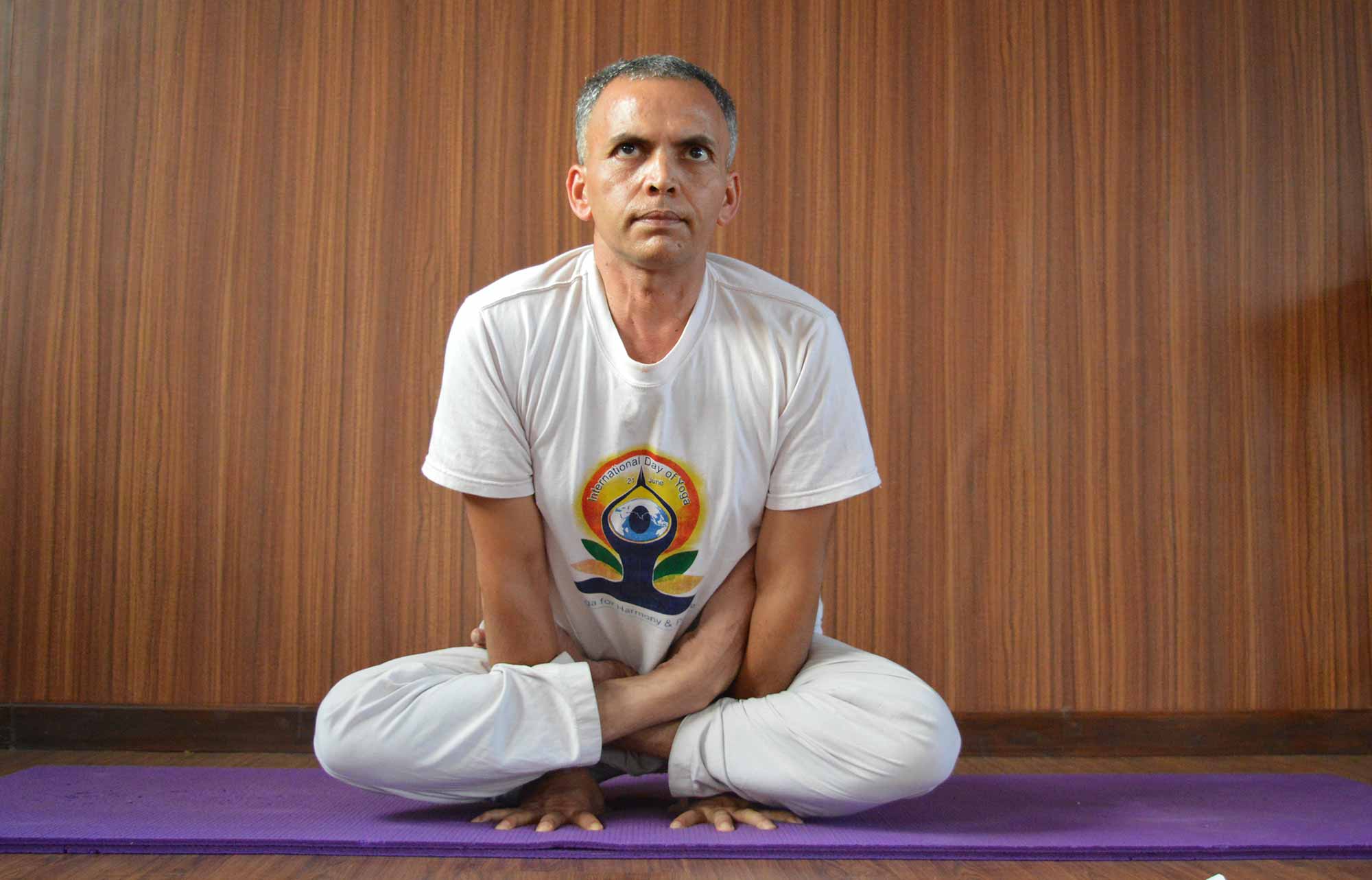
21 Dec 2020 HYN Himalayan Yoga Academy
Padmaasanam Samaaqsaadya Jaanoorvorantare Karau; Koorparaabhyaam Samaaseeno Uchchasthah Kukkutaasanam!
Kukkutasana (Cockerel Pose) is an advanced balancing yoga pose that requires good flexibility of the legs and benefits the arms and shoulders. Kukkutasana is one of the postures mentioned in the ancient Hatha yoga text, “Hatha Pradipika,” and the “Gheranda Samhita.”
Introduction
Sanskrit: कुक्कुटासन; Kukkut – Rooster/Cock, Asana – Pose; Pronounced as – cook-KETA-sana. The name comes from the Sanskrit kukkuta, meaning “rooster,” and asana, meaning “pose” or “posture.” Therefore, kukkutasana is also referred to as the rooster pose in English.
It is recommended to learn this pose only after mastering padmasana. Sit in padmasana. Insert the hands between the thighs and calves and place them on the floor. Placing the palms of the hands firmly on the floor, raise the body from the floor. The body will be supported on the elbows. It is called Kukkutasana. The pose is held for as long as is comfortable.
Kukkutasana stimulates the muladhara chakra and is used for awakening the kundalini shakti, or the primal energy coiled at the base of the spine. When stimulated, laziness vanishes.
Steps to practice Kukkutasana (Cockerel Pose)
- Starting Position: Padmasana (Lotus Pose)
- Insert your hands between your calves and thighs, and push your arms through the legs up to the elbows.
- Spread the fingers and place the palms firmly on the ground.
- Keep the fingers pointing forward.
- Inhale and press the palm against the floor to lift your body off the ground.
- Balance the weight of the body on your hands using the strength of your arms and core.
- Keep the spine erect.
- To maintain balance in the pose, choose a point in front of you and focus your gaze on it. After mastering the pose you may keep the eyes closed.
- Retain the position for a few seconds without straining your arms, breathing normally.
- To return, exhale and slowly lower the body on the ground, release the arms and come back in starting position.
- Take deep and slow breaths.
- Interchange the position of legs in Lotus Pose and practice the pose again.
Precautions for Kukkutasana (Cockerel Pose)
- Keep the spine erect as hunching will lead to misalignment of the body in the pose.
- Avoid practicing Cockerel Pose in case you suffer from any of these: high blood pressure, heart or lung problems, back pain, hernia, prolapsed, gastric ulcers, and enlarged spleen or knee injuries.
- People who have weak wrists or injured wrists, weak elbow or shoulder must also avoid practicing Kukkutasana.
- Don’t hold the pose for too long, as that may strain the muscles of the arms. Practice according to your strength and capability.
Beginner’s Tips of Kukkutasana
- As a beginner, it might be hard to get this asana right. These pointers will help you maintain the pose with ease.
- Turn your gaze to a certain focal point at a distance and concentrate on it. This should help you maintain balance.
- Ensure that your back is erect. Do not slouch while you are in this asana.
- If you find it hard to slip your arms into the gap between your folded legs, you could oil your limbs to make it easier.
Preparatory Poses
- Surya Namaskars
- Ujjayi Pranayama
- Mula Bandha
- Uddiyana Bandha
- Maha Vedha Mudra
Advanced Pose Alteration
This is an advanced pose that springs from the basic Padmasana. There is no advanced pose for this asana. However, there are variations to this pose.
- Urdhva Kukkutasana
- Baddha Padmasana
- Parsva Kukkutasana
Follow-Up Poses
- Gupta Padmasana
- Urdhva Padmasana in Sarvangasana
- Sirsasana II
- Urdhva Kukkutasana (With the head on the floor)
Benefits of the Kukkutasana
- This asana makes the muscles in the arms and the shoulders strong.
- It also helps to make the chest broader.
- The legs are loosened up.
- Strengthen the muscles of arms and shoulders, stretches chest.
- Strengthen wrists, elbows and an abdominal muscle thus aids digestion.
- Develops a sense of balance and stability
- Helpful in stimulating Mooladhara Chakra
- Contracts and strengthens perineum
- This asana builds balance and stability and also helps you focus
- The perineum contracts during this asana, therefore, the muscles are strengthened
- This asana activates and regulates the Muladhara Chakra
- It stimulates the digestive system
- It helps relieve menstrual discomfort and hip pain
Anatomy of Kukkutasana
Kukkutasana benefits the following muscles and hence can be included in yoga sequences with the corresponding muscle(s) focus:
Biceps and Triceps
Core (Abs)
Hips
Practice Note of Kukkutasana
- Important things to remember through the practice of Kukkutasana (Cock Pose) are as follows:
- Apply oil to the legs.
- It makes it easier to slip the arms between the thighs and calves, particularly for those who have a lot of hair on the legs or a lot of fat or muscles on the legs.
- Lean forward to lift, pressing the base of the fingers, fingertips, and the heel of the hands firmly into the ground.
- Bring the shoulder blades down your back.
- Pull the lower belly as you squeeze the lower ribs towards each other and engage the legs firmly.
- Remember, always maintain body weight evenly to avoid falling forward or backward.
Learn It
Learn this pose with the guidance of Swami Yog Subodh, Yoga Alliance Registered Yoga Teacher in Nepal in the Himalayan Yoga Academy.
